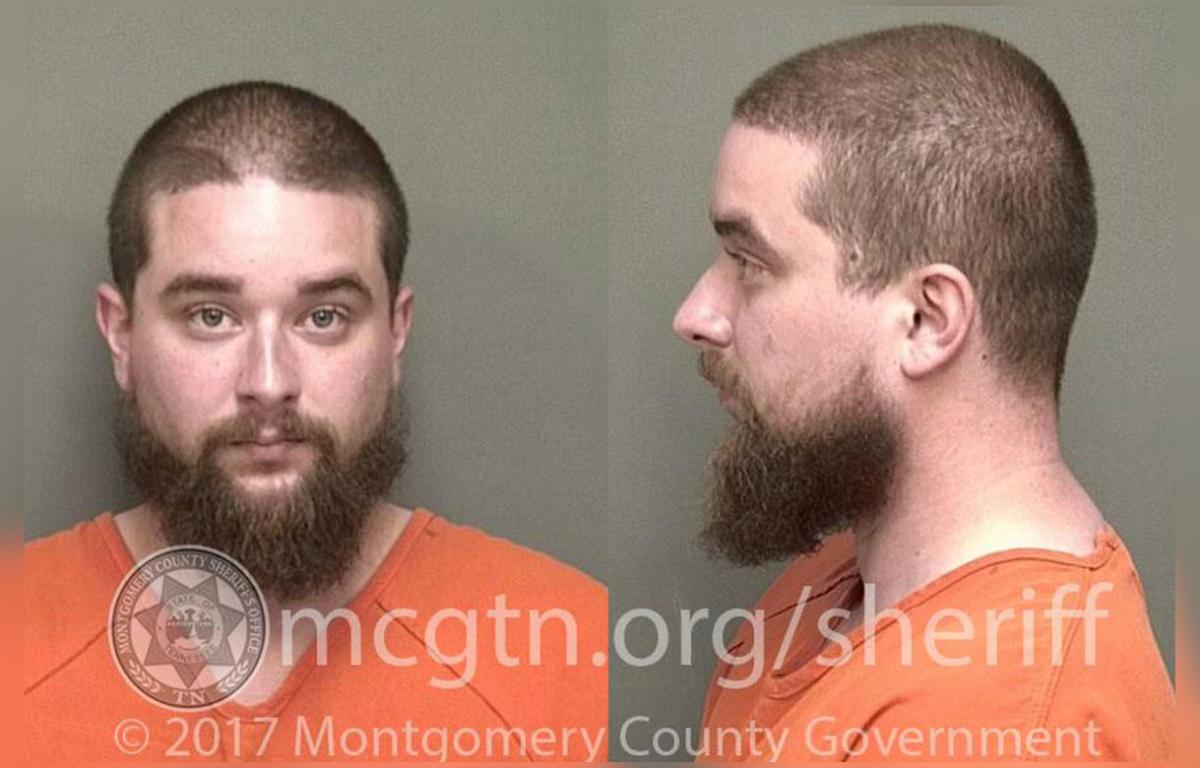CLARKSVILLE, Tenn. (CLARKSVILLE, Tenn.)- Montgomery County Judge William Goodman, III convicted a Clarksville man of attempted voluntary homicide for the shooting of a 48-year-old that led to his death.
Tanner Burgess, 27, was charged with first-degree murder, employing a firearm in the commission of a dangerous felony and aggravated assault resulting in another’s death for shooting Michael Kehoe following a physical altercation at a Cherry Tree Drive home.
On September 24, 2017, around 5:14 a.m., Clarksville Police responded to a shooting at 1538 Cherry Tree Drive. When they arrived they found Kehoe across the street with a gunshot wound to his hip and thigh area, according to an arrest warrant.
Kehoe was alert when police arrived and told them Tanner was still at the home. Witnesses said that Burgess hit Kehoe, which resulted in two other men hitting Burgess. Burgess then stated he was going to “get an AK,” returned and shot Kehoe, the warrant said.
Police surrounded the home, but Burgess was found hiding in the woods behind the home and was arrested. Investigators found one 8 mm bullet case inside the home by the front door. He was initially charged with aggravated assault.
Michael Kehoe died two weeks later and Tanner’s charges were upgraded to murder in the grand jury.
The Trial
A bench trial was held on Wednesday, Oct. 30 in Judge William Goodman’s court and the verdict was handed down on Thursday, Oct. 31 at 9 a.m.
Judge Goodman found Burgess guilty of the lesser charge of attempted voluntary manslaughter, guilty as charged of employing a firearm in the commission of a dangerous felony and guilty of the lesser charge of aggravated assault.
During the trial, the cause of Kehoe’s death was called into question by the defense.
Assistant District Attorney Dan Brollier, who prosecuted the case, said there were complicating details in the case, that led to it being a bench trial instead of a jury trial. The case was heavily based on the professional opinions of two medical doctors.
“It was a complicated case with the approximate cause of death being questioned,” Brollier said. “The judge had to decide and made a decision based on what he heard and felt.”
Brollier said the issue of gun violence is a huge issue as this case exemplifies.
“I’m tired of people resolving issues with a gun,” Brollier said. “It’s a societal problem we have to fix. We keep killing each other and I don’t understand it.”
Cause of death questioned
Public Defender, Crystal Myers said during the trial, witnesses testified Tanner believed that Michael Kehoe was threatening his fiancée and himself, and he went into his house to retrieve a weapon and fired. During the altercation, Tanner’s nose was broken.
“The defendant perceived a threat to this fiancée from Mr. Kehoe when he shot him,” Myers said.
The bullet struck Kehoe in the right thigh and Kehoe was treated at Vanderbilt University Medical Center and released on Oct. 2, 2017.
“On October 7, 2017, Mr. Kehoe fell and called 911 as a result. When paramedics arrived, he was having trouble breathing,” Myers said. “He was transported to the hospital at Tennova and numerous life-saving efforts were employed. He never regained a full pulse and he died.”
Two doctors testified about what caused Kehoe’s death.
Dr. David Zimmerman, who performed the state-ordered autopsy on Kehoe, testified that the cause of death was homicide with complications from a gunshot wound.
Dr. Greg Davis, a forensic pathologist from the University of Kentucky, testified that complications from gunshot wounds are usually pneumonia, bleeding, or a blood clot.
“The deceased did not have any symptoms of these complications,” Myers said. “Further, the deceased had an enlarged heart that was an independent risk factor for sudden death. He also had a high level of Flexeril in his system combined with oxycodone and possibly gabapentin. The combination of these medications could have contributed to or caused his heart to stop beating as well.”
In Dr. Davis’s expert medical opinion, the manner of death was undetermined with multiple contributing factors.
In a criminal trial, the prosecution bears the burden in a criminal case of proving the cause of death beyond a reasonable doubt. In this case, the State did not meet its burden. As a result, the defendant was not guilty of murder, Myers said.
Attempted voluntary manslaughter is a Class D felony punishable by 2 to 4 years of confinement. Aggravated assault is punishable by 3 to 6 years and employing the firearm during the commission is punishable by 6 years that must be served in prison. The other sentences depend on multiple mitigating and aggravating factors as decided by the court.
Sentencing is scheduled for Dec. 13, 2019.
The family of Michael Kehoe said justice was not served in this case and have many questions about the verdict.


